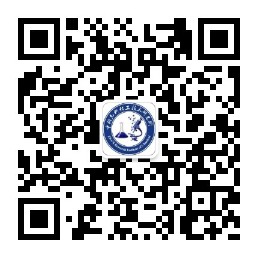歡迎訪問中科光析科學技術研究所官網!
- 聯系我們
- 關注微信

歡迎訪問中科光析科學技術研究所官網!


免費咨詢熱線
400-635-0567|
微波站電磁環境測試檢測項目報價???解決方案???檢測周期???樣品要求? |
點 擊 解 答?? |
本標準規定了地球站電磁環境干擾允許值以及干擾電平計算方法。本標準規定了地球站電磁環境測試方法。本標準適用于工作頻段為1 GHz~40 GHz同步衛星通信地球站、同步氣象衛星地球站以及海岸地球站。
本標準規定了數字微波接力站電磁環境干擾允許值、天線前方凈空區要求以及數字微波接力站電磁環境測試的方法。本標準適用于工作頻段為1 GHz~40 GHz視距數字微波接力傳輸系統臺站。本標準不適用于對流層散射微波站。
本標準規定了衛星電視上行站(以下簡稱上行站)的站型分類和設備組成、要求、試驗方法及檢驗規則等。 本標準適用于傳送PAL-D彩色電視制式的C波段衛星廣播電視上行站的設計、建設和設備的制造;其他類型衛星廣播電視上行站亦可參照使用。
本標準規定了導航衛星系統(GNSS)連續運行基準站、數據中心及數據通信網絡等建設、運行及服務的基本技術要求。本標準適用于和區域基準站網建設、運行及服務。應用站網的建設、運行及服務可參考本標準執行。
本標準規定了地圖導航定位產品的形式、構成、功能、要求、測試方法、質量評定程序以及標志、包裝、運輸、儲存和使用說明書。本標準適用于基于導航電子地圖的衛星導航定位產品生產、測試、檢驗和應用。
本標準規定了在我國邊境(界)地區對相關地面無線電業務的無線電特性及使用情況開展定量測試的測試方法。本標準適用于VHF/UHF(30 MHz~3 000 MHz)頻段的地面無線電業務。根據測試任務需要,可擴展至中、短波(30 MHz以下)等更低或微波(3 000 MHz以上)等更高的頻段。
引用GB 9706.1-2007的第1章,不包括以下內容。 修改(增加在1.1末尾處) 本標準詳細描述了適用于人體使用的脈搏血氧儀設備的基本安全和主要性能的專用要求,該設備包括在正常使用中的任何必要的部件,如脈搏血氧監護儀、脈搏血氧探頭、探頭電纜延長線等。 這些要求也適用于經再加工的脈搏血氧儀設備,包括脈搏血氧監護儀,血氧探頭和探頭電纜延長線等。 脈搏血氧儀設備的應用范圍包括,而不僅限于,在醫療保健機構和家庭中估計患者的動脈血氧飽和度和脈率。 本標準不適用于實驗室研究使用的脈搏血氧儀設備,也不適用于需采集患者血液樣本的血氧儀。 本標準不適用于胎兒專用脈搏血氧儀設備。 本標準不適用于放置于患者環境之外顯示SpO<下標 2>數值的遙測或主(從)設備。 本標準的要求替代或修改了GB 9706.1-2007,并預期優先于相應的通用要求。
本標準規定了空空導彈武器系統、空空導彈及其各分系統的主要術語。\n 本標準適用于空空導彈從研制到使用的全過程。
本標準規定了導航衛星系統(GNSS)連續運行基準站與驗潮站并置建設的一般要求、設計與選址、基建、儀器設備與安裝、設施維護的具體要求。本標準適用于GNSS連續運行基準站與驗潮站的并置建設。
本規范適用于電信業務經營者的無線局域網建設的工程設計。
La présente Norme européenne prescrit les exigences, les méthodes d'essai et les critères de performance des équipements de contr?le et de signalisation d'alarme vocale destinés à être utilisés dans les systèmes de détection et d'alarme incendie installés dans les batiments où le signal sonore d'alarme retentit sous la forme de tonalité(s) et/ou de message(s) vocal(aux).Elle prescrit également l'évaluation de la conformité de l'équipement conformément aux exigences de la présente Norme européenne.
This document controls the definition of all common terms used in the European Cooperation for Space Standardization (ECSS) Standards System. Terms specific to a particular ECSS Standard are defined in that standard.This document does not include the definition of terms used with their common meaning. In this case, the definition from the Oxford English Dictionary applies.
This standard is a part of the System Engineering branch of the ECSS engineering standards and covers the methods for the calculation of radiation received and its effects, and a policy for design margins. Both natural and man-made sources of radiation (e. g. radioisotope thermoelectric generators, or RTGs) are considered in the standard.This standard applies to the evaluation of radiation effects on all space systems. This standard applies to all product types which exist or operate in space, as well as to crews of manned space missions. The standard aims to implement a space system engineering process that ensures common understanding by participants in the development and operation process (including Agencies, customers, suppliers, and developers) and use of common methods in evaluation of radiation effects. This standard is complemented by ECSS-E-HB-10-12 ?Radiation received and its effects and margin policy handbook?.This standard may be tailored for the specific characteristic and constrains of a space project in conformance with ECSS-S-ST-00.
This part of IEC 60204 applies to the application of electrical and electronic equipment andsystems to hoisting machines and related equipment.
This part of IEC 61000 considers tests of immunity and intentional or unintentional emissionsfor electric and/or electronic equipment and tests of screening effectiveness in reverberationchambers. It establishes the required test procedures for performing such tests. Only radiatedphenomena are considered.The objective of this part is to establish a common reference for using reverberationchambers to evaluate the performance of electric and electronic equipment when subjected toradio-frequency electromagnetic fields and for determining the levels of radio-frequencyradiation emitted from electric and electronic equipment.NOTE Test methods are defined in this part for measuring the effect of electromagnetic radiation on equipmentand the electromagnetic emissions from equipment concerned. The simulation and measurement ofelectromagnetic radiation is not adequate for quantitative determination of effects. The defined test methods areorganized with the aim to establish adequate reproducibility and repeatability of test results and qualitative analysisof effects.This part of IEC 61000 does not intend to specify the tests to be applied to a particularapparatus or system. Its main aim is to give a general basic reference to all concernedproduct committees of the IEC. The product committees should select emission limits and testmethods in consultation with CISPR. The product committees remain responsible for theappropriate choice of the immunity tests and the immunity test limits to be applied to theirequipment. Other methods, such as those covered in IEC 61000-4-3, CISPR 16-2-3 andCISPR 16-2-4 may be used.
 前沿科學
微信公眾號
前沿科學
微信公眾號
 中析研究所
抖音
中析研究所
抖音
 中析研究所
微信公眾號
中析研究所
微信公眾號
 中析研究所
快手
中析研究所
快手
 中析研究所
微視頻
中析研究所
微視頻
 中析研究所
小紅書
中析研究所
小紅書